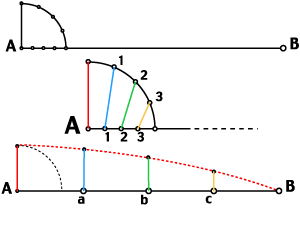Hi Harper,
I see you're building a Manchuria model. She is also on my wish list. May I ask you where you got the plans to build her?
as for deck camber, the curve, as rtwpsom2 told you, remains constant for the deck's whole length. The dimensions of this curve (height to beam ratio) depended on the classification society, depending also frome the ship's overall dimensions. There was a minimum height imposed to be sure that green water would wash away rapidly yet assuring some comfort to the people walking on the decks
Having a main frame cutaway, as you do, is the better option to determine the curve of your decks, here the picture of the main frame of a little cargo ship I built some years ago:

when you don't have any information about the deck camber, take your information from other sources.
Drawing the curve is done the following way:

- draw a horizontal line from A to B, from the centreline of the ship to the hull's side, at the main frame
- draw a vertical line at the centerline, from numbers you already know from the original ship or other similar ships, or even from pictures of the superstructures of the ship you model
- draw a quart of a circle as on the picture above
- divide the quarter circle and the horizontal line within by four
- draw the intermediate lines as shown here above (red, blue, green, yellow)
- put those segments on your first horizontal line, line once again being divided by four
And there you are, the dotted red line shows you the perfect deck camber you then put on your framing plan
_________________
Scared of Nothing , Always Thirsty
Just call me the "Cereals Box Killer" , I guess




